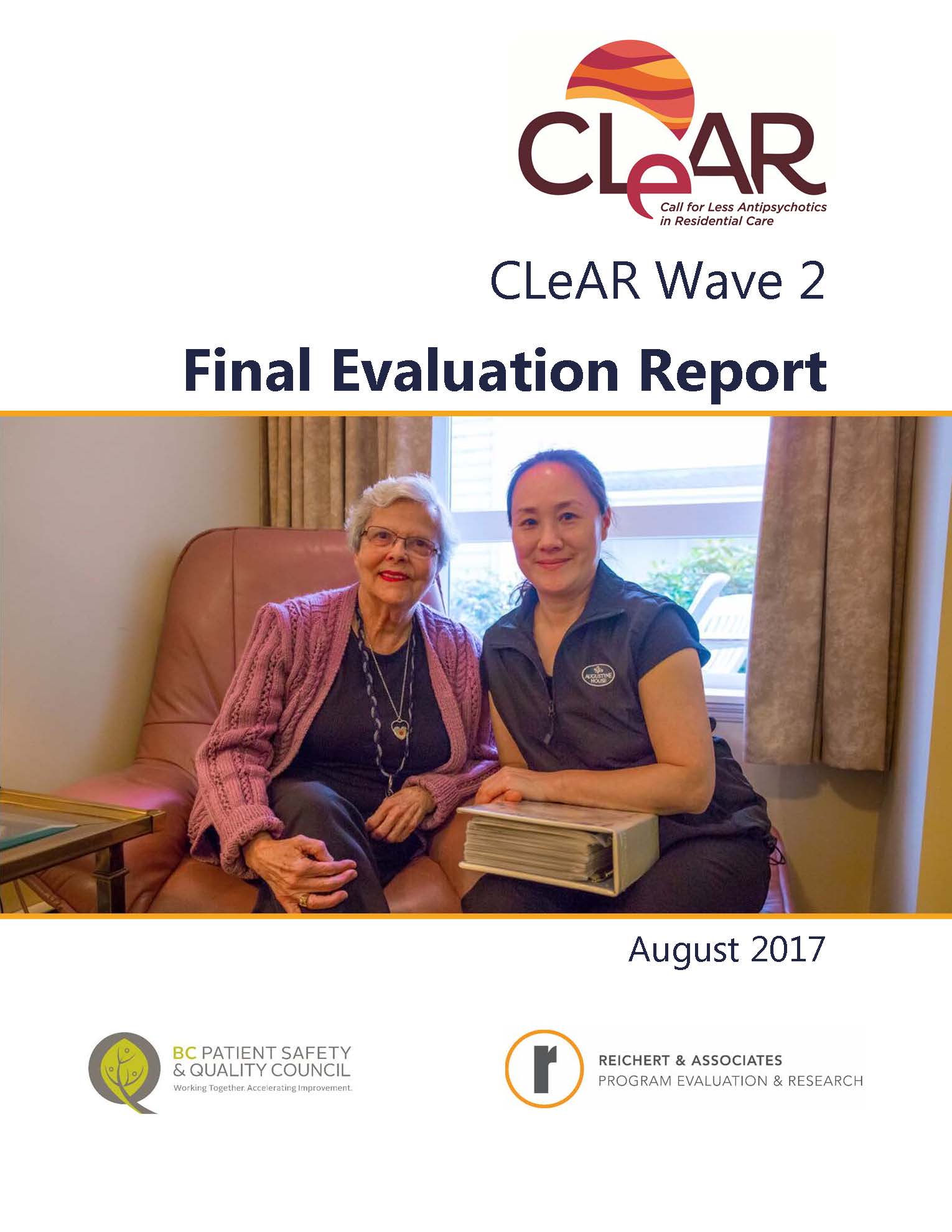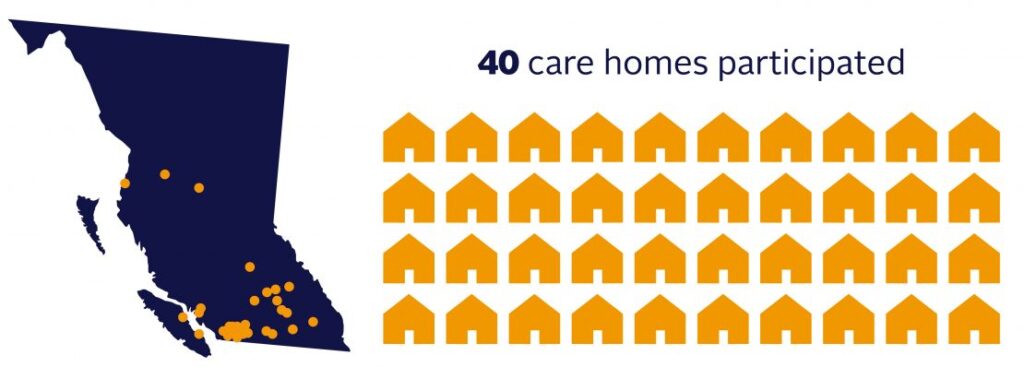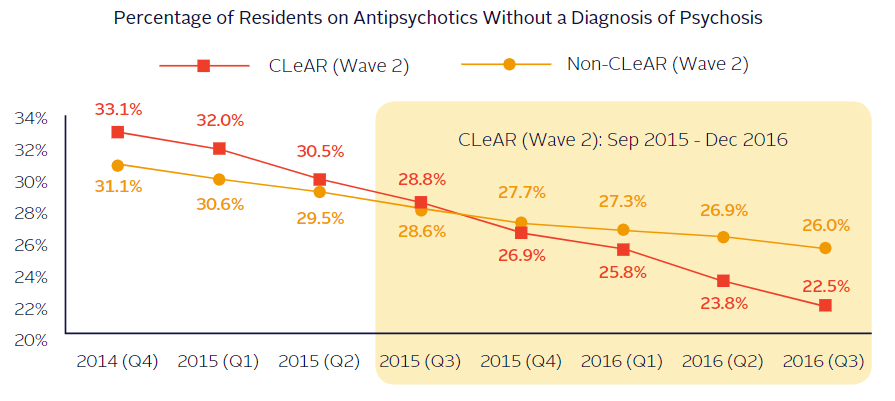- CLeAR
CLeAR Wave 2 – Final Evaluation Report

Clear’s second wave ran from September 2015 through December 2016, during which it was known as the Call for Less Antipsychotics in Residential Care.

To help participating care homes measure Clear’s impact, they divided residents into two groups: an “Original Cohort” of residents who were admitted prior to the start of Clear, and an “Additional Cohort” of residents who were admitted to a care home after the start of Clear.

- 33.1% (895 of 2,705) of the residents in the Original Cohort were being prescribed antipsychotics. That number was reduced to 18.6% (502 of 2,705).
- And the prescriptions were reduced for another 11.7% (316 of 2,705) of residents.
- Furthermore, 46.9% (562 of 1,198) of the residents in the Additional Cohort were being prescribed antipsychotics. The prescriptions of antipsychotics were discontinued or reduced for 51.9% (292 of 562) of them.
In every care home in British Columbia, clinicians monitor residents using interRAI’s Resident Assessment Instrument–Minimum Data Set (RAI-MDS 2.0).
According to this data, provided by the Canadian Institute for Health Information, care homes that participated in Wave 2 reduced the percentage of residents who are prescribed antipsychotics without having a diagnosis of psychosis from 28.8% to 22.5%.

The data also shows that, over the course of the initiative, care homes that participated in Clear, as well as care homes that did not participate in Clear, decreased the percentage of their residents who are prescribed antipsychotics without a diagnosis of psychosis. Care homes that participated in Clear achieved a greater, and statistically significant (p < .05), reduction in the number of these residents on antipsychotics (21.9% compared to 9.1%), in comparison to care homes that did not join Clear.
Wave 2 Report
These results – and many more – are captured in a commissioned evaluation of Wave 2. The report summarizes the effectiveness of Clear, as well as how well it achieve its goals and objectives.
Key Takeaways from Wave 2’s Report
- Decreased use of antipsychotic medication
- Improved quality of life for residents
- Built capacity for quality improvement
- Increased resident care planning for quality of life and safety
- Decreased residents on antipsychotics without a diagnosis of psychosis
- Increased use of best practice management for residents with BPSD
- Improved culture by enhancing teamwork and communication in workplace and workflow
- Changes resulting from CLeAR are considered sustainable

